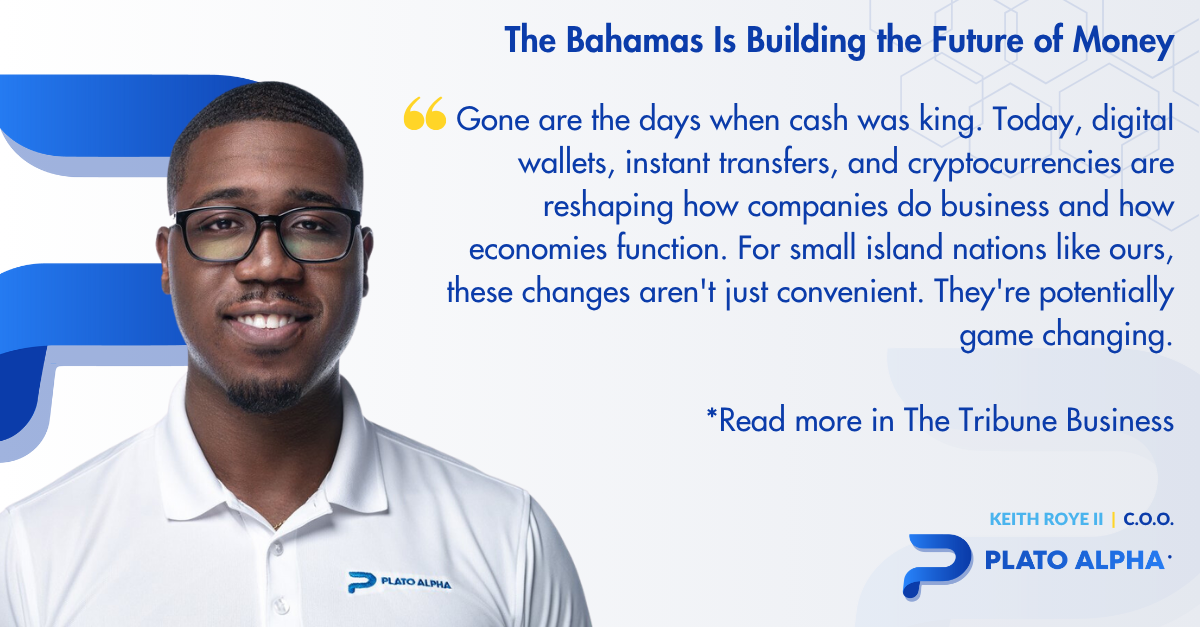
The Future of Money in The Bahamas: Why Digital Payments Matter
If you’ve walked into a Nassau coffee shop lately and paid with your phone, you’ve already experienced the future. The way money moves, both around the world and right here in The Bahamas, is changing faster than ever before.
Gone are the days when cash was king. Digital wallets, instant transfers, and even cryptocurrencies are reshaping how businesses operate and how our economy functions. For small island nations like ours, these innovations are not just convenient. They are transformative.
Globally, digital payment transactions are projected to exceed $10 trillion annually, with mobile payments growing at double-digit rates. For businesses, the advantages are clear: faster payments, reduced costs, improved record keeping, and quicker access to funds. Small business owners no longer need to wait days for checks to clear; they can receive payments instantly.
Even more exciting, digital payments open new markets for Bahamian entrepreneurs. A local artisan can sell handmade jewelry to customers in London or Toronto as easily as to someone on Bay Street. Modern payment systems now handle currency conversions automatically, removing barriers that once limited small businesses to local markets.
The Bahamian Edge: The Sand Dollar
While many countries still debate the role of digital currencies, The Bahamas made history in October 2020 as the first nation to launch a Central Bank Digital Currency (CBDC) called the Sand Dollar.
Think of it as the digital version of the Bahamian dollar, backed by the Central Bank with the same stability as cash but transferable instantly across the islands. The Sand Dollar was designed to solve real challenges unique to our geography. With 700 islands and cays, traditional banking infrastructure cannot reach everyone. Transporting physical cash is expensive and time-consuming. For many Family Island residents, banking meant traveling to larger islands by boat.
The Sand Dollar changes that. A business owner on Eleuthera can receive payment just as easily as one in Nassau. A fisherman on Andros can be paid immediately without needing a traditional bank account. This is financial inclusion in action.
Progress and Challenges
The effects are already visible. Tourism operators now process international payments more efficiently, avoiding high credit card fees. Local businesses are adapting to younger travelers who expect contactless options. Real estate professionals are exploring blockchain for faster, more transparent property transactions.
Yet, challenges remain. Adoption of the Sand Dollar has been slower than expected, with many Bahamians still relying on cash. Internet access is uneven across the Family Islands, and some remain skeptical of digital platforms. Regulatory frameworks must also evolve to protect consumers while maintaining financial integrity.
The Road Ahead
Despite the hurdles, one thing is certain: digital payments are not a passing trend. For The Bahamas, this is an opportunity to lead the region in financial innovation. Our financial infrastructure, global connections, and proven leadership position us well to become a Caribbean hub for fintech.
The message for Bahamian businesses is simple: adapt or risk being left behind. Digital payments are the foundation of modern commerce, and the tools to get started are already here.
Money is becoming invisible, moving through fiber optics and wireless signals. This transformation offers both challenge and opportunity. By embracing digital payments, The Bahamas can build a more inclusive, connected, and competitive economy for all.
The revolution is not coming. It has already begun. The question is, are we ready to embrace it?
